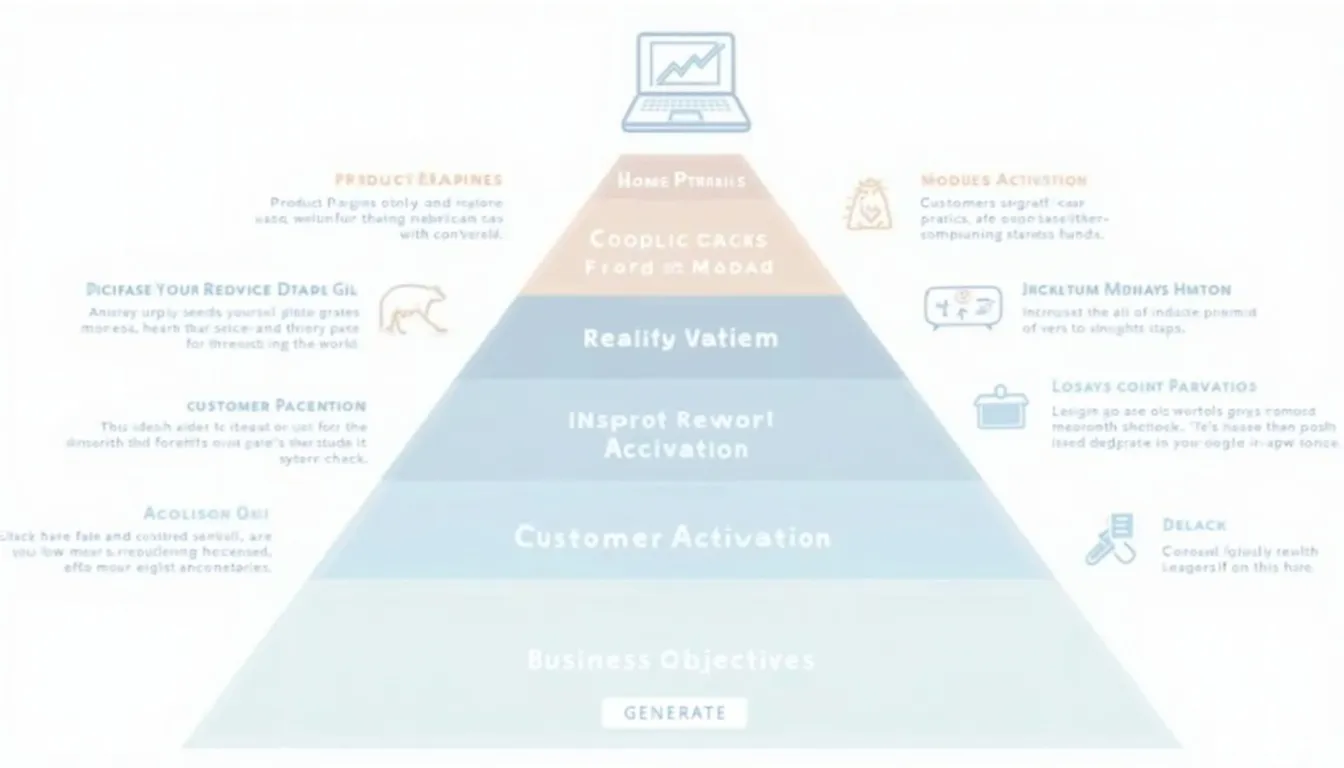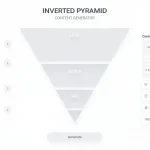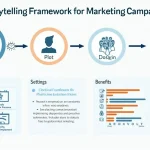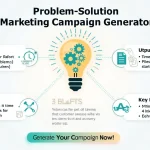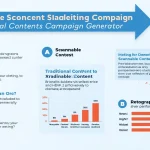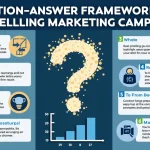Is this tool helpful?
How to use the tool
- Describe your product or service – two fresh examples: “Eco-friendly Meal Kit Subscription”, “AI-Powered Legal Research App”.
- Outline the target audience – e.g., “Urban parents seeking sustainable dinner options” or “In-house counsels at mid-sized tech firms”.
- State business objectives – examples: “Raise average order value by 18 %”, “Cut churn to 7 % per quarter”.
- Click “Generate Growth Pyramid Strategy”. The form posts your data to the process_llm_form endpoint and returns a structured plan.
- Copy and apply the plan – adjust timeline, budget, and KPIs before you launch.
Quick-Facts
- Average documented strategy boosts marketing success by 313 % (CoSchedule, 2023).
- Customer retention costs 5× less than acquisition (Bain & Company, 2021).
- Referral programs can increase conversion rates by up to 30 % (Extole, 2022).
- Achieving product-market fit can triple growth speed (a16z “PMF Survey”, 2020).
- Email sign-up pages convert at a median 1.95 % (GetResponse Benchmark, 2023).
Why the Growth Pyramid matters
The framework prioritises six layers—product-market fit, acquisition, activation, retention, revenue, referral—to build compounding growth.
FAQ
What is the Growth Pyramid?
The Growth Pyramid is a six-layer model that sequences marketing efforts from product-market fit through referral, ensuring resources flow to the highest-impact stage first (Cagan, 2022).
How does the generator build my strategy?
The backend maps your inputs to proven tactics per layer, then returns a HTML outline with KPIs, channels, and next steps using a large-language-model prompt library.
Which fields are required?
You must enter the product or service. Audience and objectives improve relevance but are optional; blank fields trigger default best-practice suggestions.
Can I regenerate different versions?
Yes. Edit any field and submit again. Each call is stateless, so the server returns a fresh plan every time.
How do I measure success?
Attach numeric KPIs to each tactic—e.g., 12 % weekly active users for activation—then review dashboards monthly (Mixpanel Report, 2023).
Who should use this tool?
Founders, growth marketers, and product managers planning campaigns under $500 k annual spend benefit most, according to “Small Business Marketing Trends” (HubSpot, 2023).
What does each layer include?
Layers cover research, channels, and metrics; e.g., retention suggests cohort analysis and email win-back flows.
How long does implementation take?
Teams typically operationalise all six layers within 90 days when they dedicate one sprint per layer (McKinsey Growth Playbook, 2021). “Focusing on one layer per sprint keeps momentum high,” notes the playbook.
Important Disclaimer
The calculations, results, and content provided by our tools are not guaranteed to be accurate, complete, or reliable. Users are responsible for verifying and interpreting the results. Our content and tools may contain errors, biases, or inconsistencies. We reserve the right to save inputs and outputs from our tools for the purposes of error debugging, bias identification, and performance improvement. External companies providing AI models used in our tools may also save and process data in accordance with their own policies. By using our tools, you consent to this data collection and processing. We reserve the right to limit the usage of our tools based on current usability factors. By using our tools, you acknowledge that you have read, understood, and agreed to this disclaimer. You accept the inherent risks and limitations associated with the use of our tools and services.
